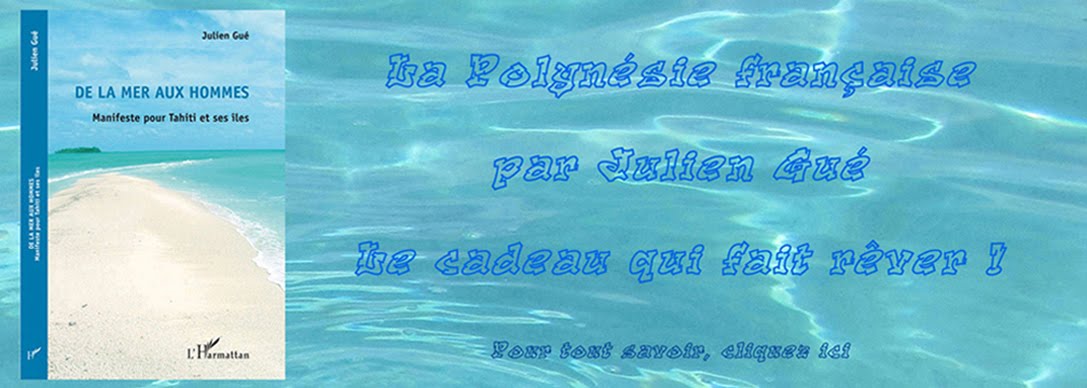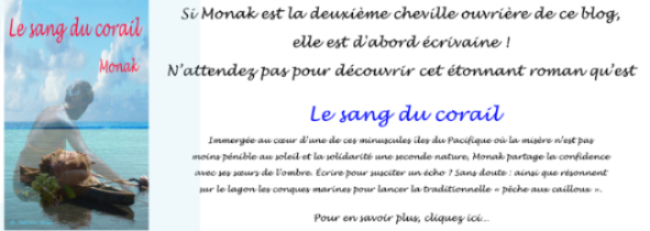.jpg)
Lagoon Graff
The Graffiti, or Street Art, is caught in spatial planning policy in Polynesia
nowadays... like everywhere else. It reconnects with this very prehistoric
"rock paintings". It’s sprayed on the stone, concrete, metal, by thin
layer and transmits a visual, graphic, ethical or aesthetic discourse...
On May 2014, the first
international festival of graffiti "ONO'U" in Papeete, is not in fact
the first intrusion of what belongs to the spray-painting, mural, stencil, bonding line, collage, all what’s
penciled and so on, onto the walls and facades of the capital and other
Polynesian islands. It follows two decades with many "wild"
achievements; but also with framed artworks by associations of graffiti
artists, cultural events or works commissioned by individuals.
.jpg) |
| A Street, a perspective |
Has it
the Tahitian public space been really rehabilitated in popular attitudes like a
place of expression? Has it become currently the springboard that defends the
living arts in urban than in rural areas? Did the artists revisited the old and
original forms, or have they created a new imaging?
Do
the recent pictorial achievements really fit the "street furniture"? How do
the Tahitians address the representations that foreign artists have made of
them? What are became graffiti...
…By way of
extensive beginnings...
For millennia, the volcanic
rock, brittle and fragile on Polynesian high islands, has left us some vestiges
of petroglyphs: ideograms or pictographs, some of which are indecipherable. Before
like now, it appears that the graphic art of the Polynesian islands is
dedicated to corrosion: the centuries-old printing woodblocks have resisted rarely,
neither the decorated tapa (bark cloth) nor the tattoos, lasting only the time
of a skin, of a lifetime...
.jpg) |
| Carved in lava stone |
Walls or natural caves,
store fronts or public buildings gables seem to have always done office of speech
area, of tribune, individually or collectively, in different periods. After
having enhanced the educational purposes in the Middle Ages, the walls are
confronted with protester proposals or
reports (see the matter of
billboards that stirred the Renaissance ...).
So let's recall the
reactions to the first official stencil graffiti: "NO POSTING", placarded by the Third Republic in 1881 ...
and in the same vein, "some measures of assimilation,
enacted by Jules Ferry, want to prohibit
the Tahitian language and to
francize the "natives" of the
colonies ... That's justifying a certain imperialism. "
It is surprising that the Deixonne Act of 1951, "authorizing the teaching of regional languages, has
been applied only in 1981 to French Polynesia." And in this joust of cultures and minorities against the power,
the practice of graffiti has been as controversial or chased.
.jpg) |
| A message, a picture (2011) |
Historical
outline
The Graffiti becomes
aesthetic representation in the 1900s. The first Atlantic crossing of lettering
was committed by Kilroy in 1942. This employee of a factory of military bombs from
Detroit (Michigan) attempted to serve his peaceful position by the following
markings: "Kilroy was here ", tagged on the hull. In Europe, the
soldiers reproduce the tag on the walls still standing. Message received.
The rebellious period of the
sixties saw the flowering all kinds of slogans on the walls. Meanwhile the
lettering (pure graffiti) is signed by a tag. The works are stylizing. With
emblems or chimera the graff spots are diversifying, on movable supports
(trucks, cars), on areas deemed inaccessible (tunnel, the top of a building),
play the trick of the eye, become airspace art, upset the perspectives and
viewpoints.
.jpg) |
| Before (2011) ... After (2014)... |
The Graffiti or Street Art
is one of the hallmarks of contemporary aesthetics of the twentieth century.
This does not mean that this vast wild and open museum originally have been
entitled to something else that "a minimum recognition, a ridiculous and microscopic
place in the media, a constant suspicion of prefectures, a permanent rejection
of art institutions.”
On the other hand, some
capitals were sponsors such productions ... to dress their environment. What
about now?
Tabu and
"octopus"
We must admit that the urban
art can make linkages with the City when it's accepted and acknowledged by this
latter. Intended to mean that "the street,
being the platform for greater visibility, the artist collectives express their
ideas here, support specific causes and
try that the people react without any prior censorship of politicians, police
and businessmen…”
Graffiti Festival in
Papeete
The legal framework is
strict: "When they aren't on authorized carriers, the graffiti are for the
French or Polynesian criminal law, destruction, degradation or willful damage
of property belonging to others." In 2001, the taggers are stuck through
the sites, journals, by the device "OCTOPUS (Tool of Centralization and
Operational Treatment of Procedures and Users of Signatures)" which has
nothing of the harmless octopus.
"Furthermore, the
content of the inscriptions (death threats, incitement to racial hatred,
defamation, etc.) may be an offense in itself."
In March 2009, the "Town Bulletin of Papeete" began
a campaign in these terms: "More than 9,000 "tags" have been
identified in the city; it is a scourge! The fight against this eyesore has
become a priority for the city of Papeete. These inscriptions attack the eyes
and cause a feeling of neglect and insecurity”.
.jpg) |
| The long hunting of "Tags" on"Te Honoraatira" |
An explanation is needed:
"If we go by the theory of broken glass developed in the United States,
graffiti is a source of insecurity because it lets the people feel that their
neighborhood is neglected by public authorities and that the social
incivilities go unpunished.”
Anyway, I like to
"breathe" cities through windows that the taggers open onto the blind
facades, the broken walls in disadvantaged neighborhoods. I resume my
pilgrimage, started there three years. Is the urban landscape being changed
with the Graffiti Festival 2014?
Forever or ephemeral?
The Street art is
unfortunately perishable. It is not immune to the ravages of time, or the human
hostilities. For example, the soul of Beirut, rebuilt at the heart of his
injuries, touched me deeply in 2003.
What’s remaining after the 2006 war?
He "may at any time be
lost forever." "Under the Street
Art Project, the Cultural Institute of
Google works with experts from fifteen countries to preserve more than five
thousand images of works and exhibitions."
.
.jpg) |
| A snack on the edge ... |
Sometimes designed on
surfaces previously occupied, but especially on the gigantic spaces, it begs
the question of their effective integration into the outlook of the initial
cityscape. Some bring their inspiration BD vision, completely out of line. Others
are modernizing their fenua (country in Mao’hi language) vision.
Others, finally, play with color or their feelings.
Quickly assimilated into the
everyday look, quickly forgotten, some even are overshadowed by the return of
the debris. However, they re-driven everywhere on the island of Tahiti, the
desire to hide or renovate chipped palisades.
.jpg) |
| Urban Poetry…ephemeral ... |
The Graffiti can it be
institutionalized as it was fought. Can it continue when it is an act of the
moment?
Games of views ... unreal
... fantasy, future, lightness of humor ... the Graffiti is art of the unfinished,
like the poetics.
"... We are told street
This is our stage, our ring, our choice
An article of Monak
Copyright Monak. Ask for
the author’s agreement before any reproduction of the text or the images on
Internet or traditional press














.jpg)